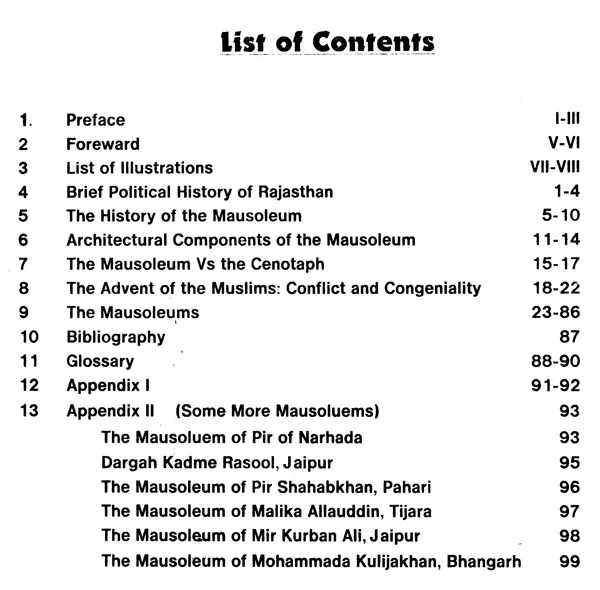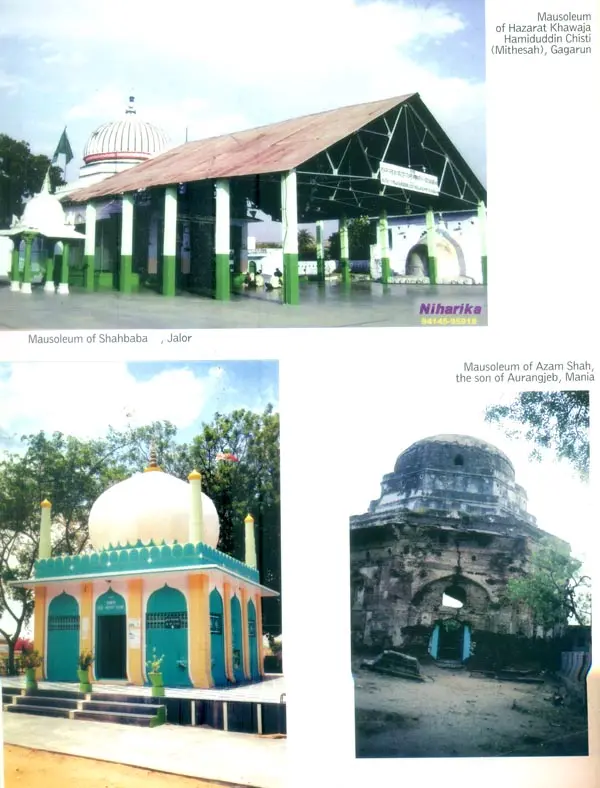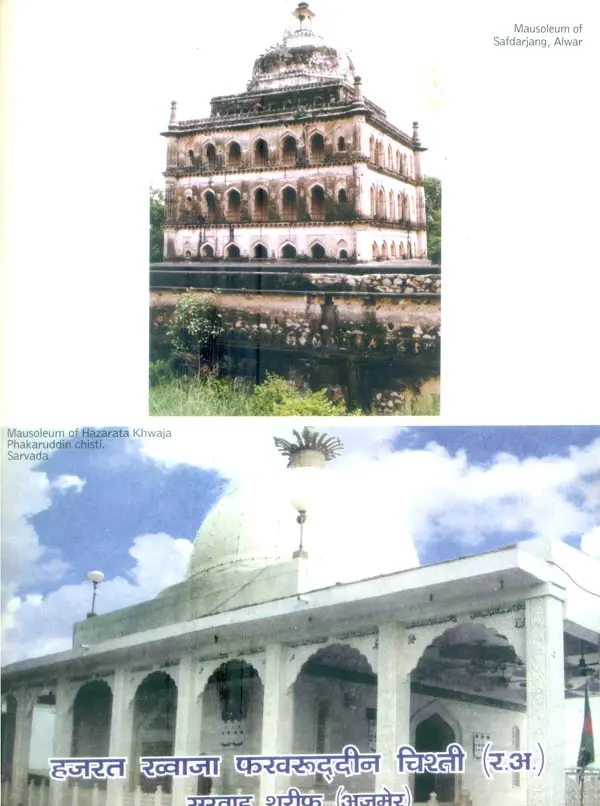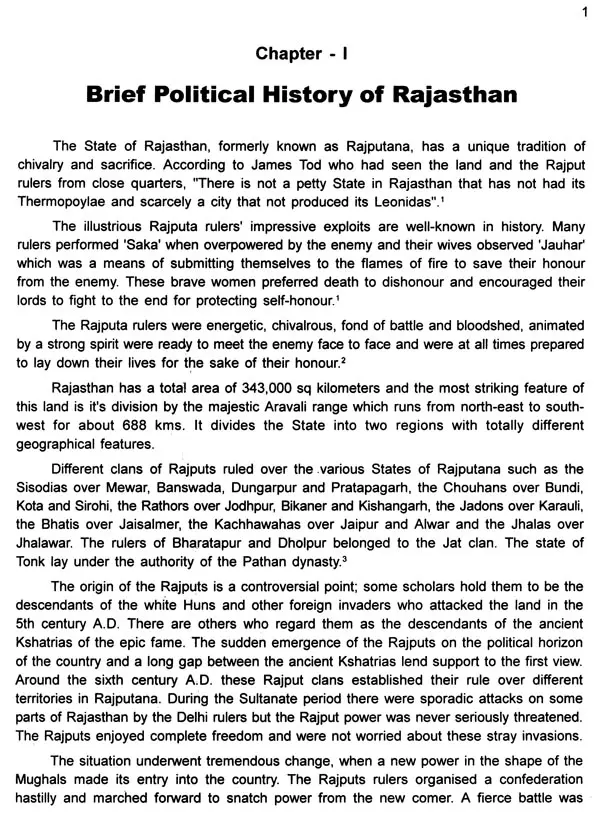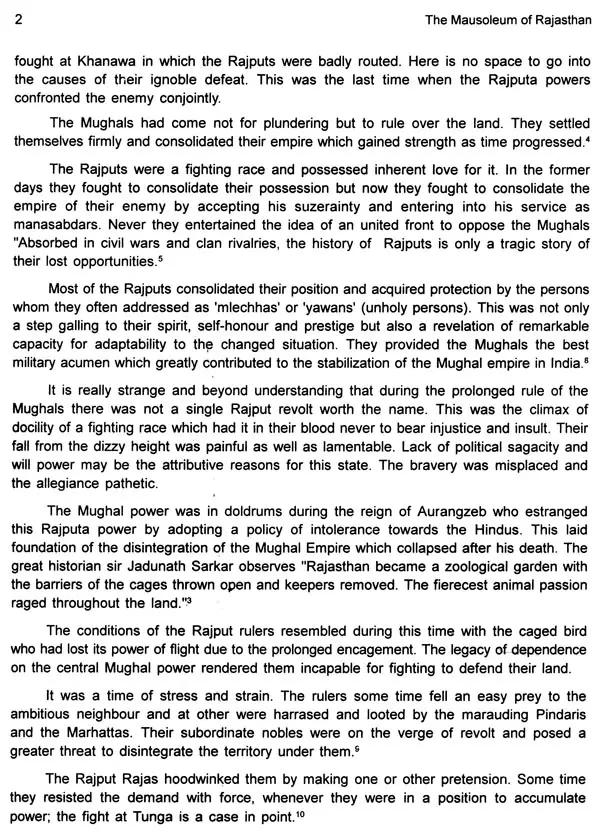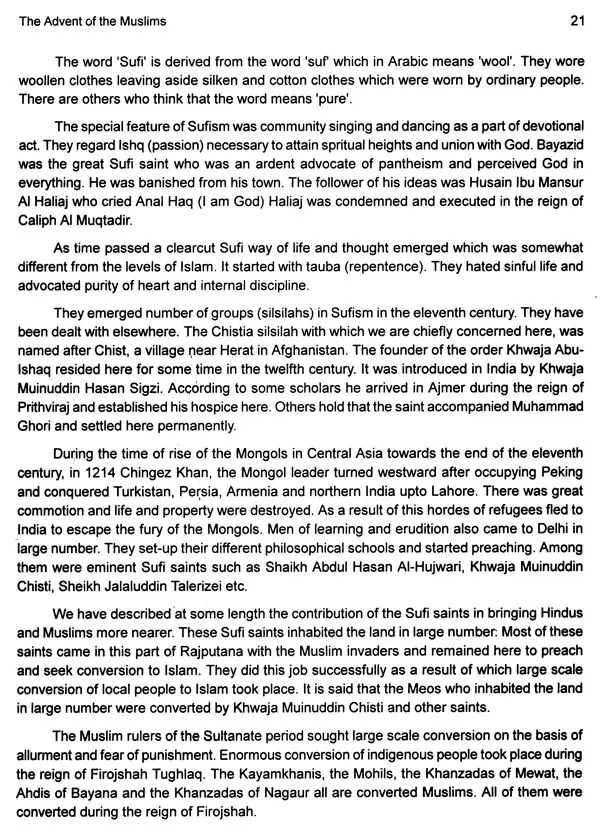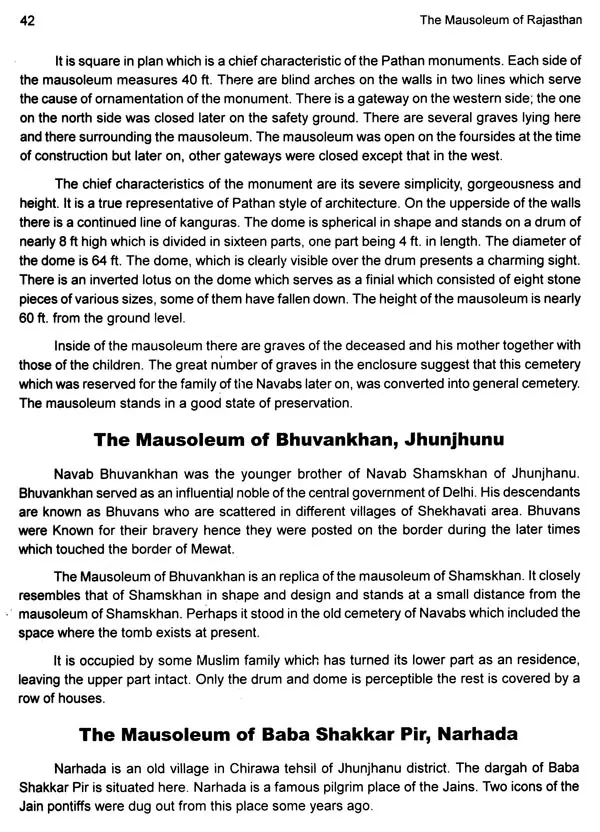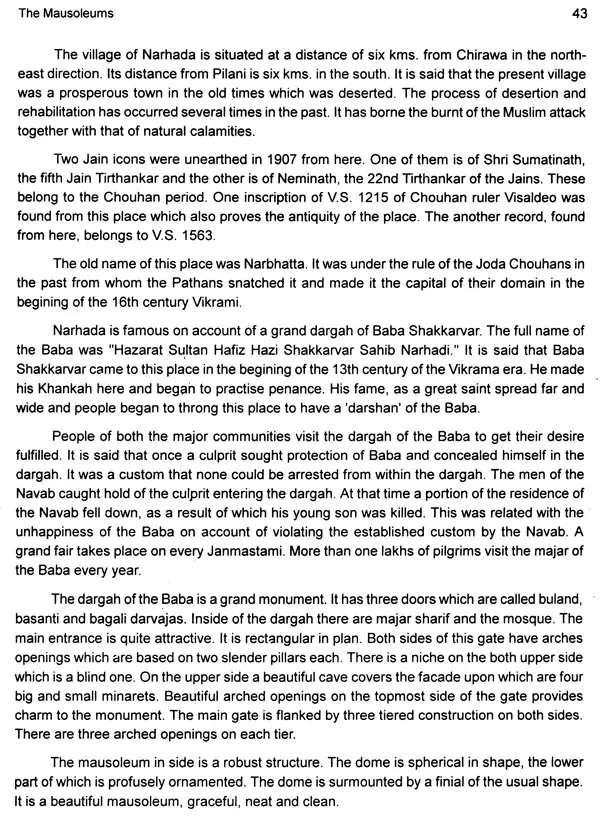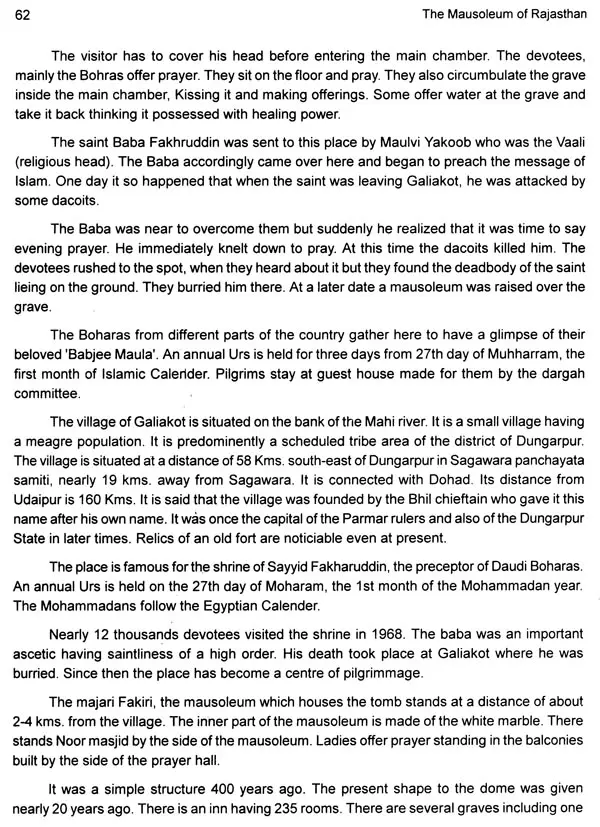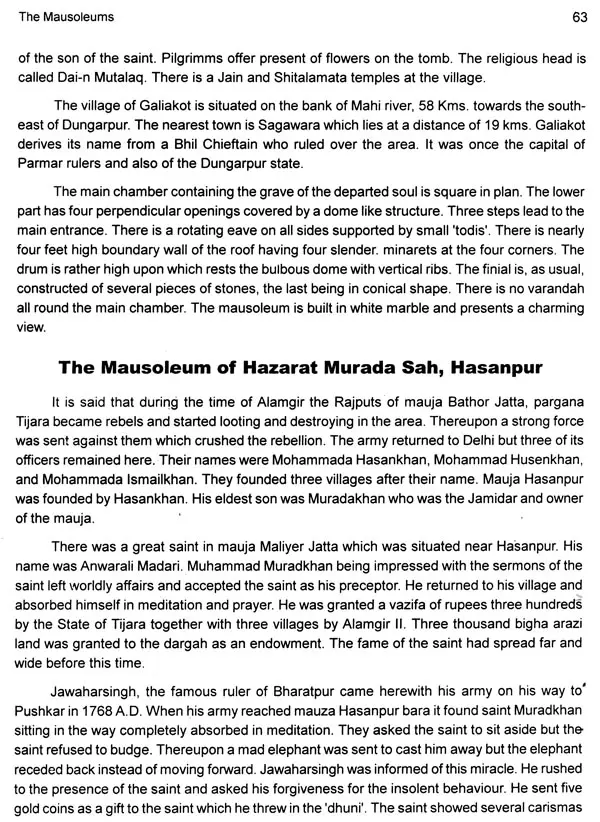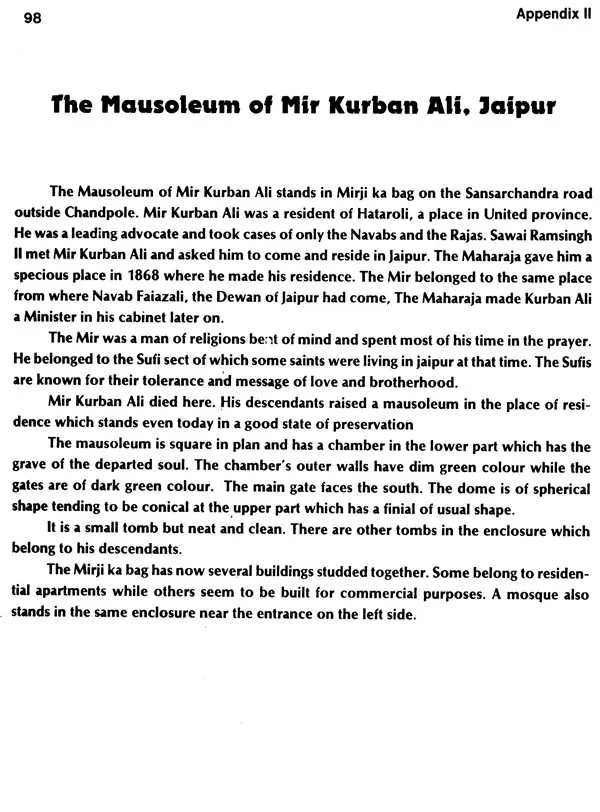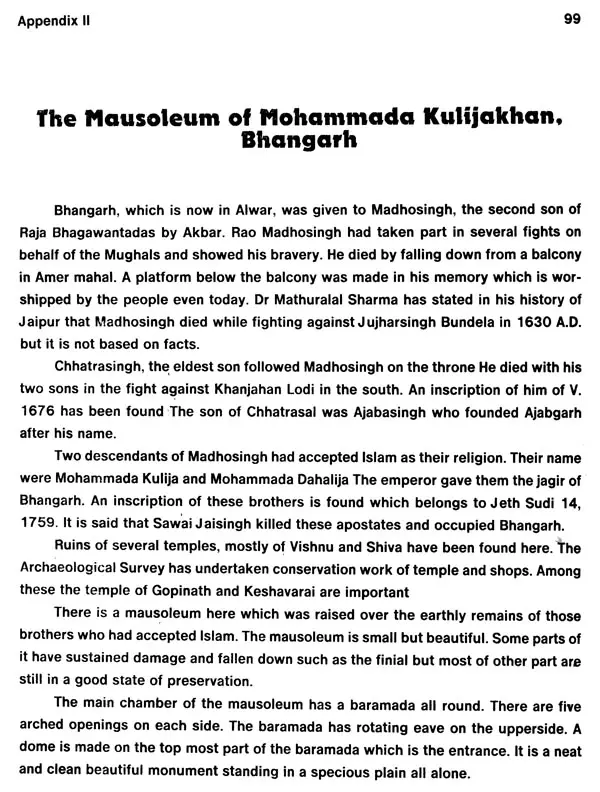
Mausoleums and Tombs of Rajasthan- History and Architechture
Book Specification
| Item Code: | UAE035 |
| Author: | Ratan Lal Mishra |
| Publisher: | Literary Circle, Jaipur |
| Language: | English |
| Edition: | 2007 |
| ISBN: | 8181820347 |
| Pages: | 138 (Throughout Color Illustrations) |
| Cover: | HARDCOVER |
| Other Details | 11.00 X 9.00 inch |
| Weight | 710 gm |
Book Description
These tombs were solemn resting places of their mortal remains.
These tombs had architectural elegance, purity of design and sepulchral magnificence. These are solid massive building unmistakably appropriated to the purpose to which they are dedicated and capable of an expression of sublimity.
The present book deals with the subject of mausoleums and tombs of Rajasthan Tombs of two categories are generally found in the state i.e., the tombs built on political figures and those raised on saints. A full treatment has been accorded to the subjects of these monuments and their architectural excellence has been defined in detail.
This is the first and foremost work in Rajasthan dealing with the subject. It is hoped that it will prove useful and interesting to the scholars and general readers as well.
The Name of some of his book is as under.
Military Architecture in Ancient India Mortuary Monuments in Ancient India
Forts and Fortifications of Rajasthan
Memorial Monuments of Rajasthan The Cenotaph The Haldias and their Role in States Politics
Inscription of Rajasthan 4 volumes
The author of the present work has written a fine book on the cenotaphs of Rajasthan as memorial monuments covering monuments of twenty one states that constituted Rajasthan. Thus one part was finished. Now this is the second part covering the mausoleums of the state which’s being published. Both these works together will go a long way to present a complete picture of the memorial monuments of Rajasthan.
There was a long-felt need 'of a work containing historical account of mausoleums which stud the state 'in large number from end to end. The need, now stands fulfilled due to the laborious and intelligent Endeavour of the author who undertook an extensive tour of the state to cover the monuments lying in the far-flung corners of the state. The author has given the history of the mortuary monuments such as cenotaphs and mausoleums right from the beginning The history of mausoleums starts from the construction of Pyramids in Egypt. As time passed the concept of these monuments was refined and enriched. Beautiful structures were raised during the different periods of medieval history which are known for their elegance of construction, Declan and , form. It is the memorial monument, the Tajmahal which is regarded as the best representative of Muslim architecture in India.
A good coverage has been given to the cenotaphs of the Rajput from time to time in history books, but no such treatment has been accorded to the subject of mausoleums which are equally forceful and graceful architectural representatives in the states in the form of memorial monuments. The author deserves thanks for his arduous effort to complete the picture by producing a work on these much neglected monuments.
When we speak of, an Indian identity, we subsume a number of identities that vary depending upon class, caste, region, language and also space and time. But this variety is in itself integral to our idea of Indianans. India has always discovered its Indianans in its pluralistic cultural tradition. Though the religious fundamentalists contest this idea and define India as a homogenous exclusive country, but this sort of ideology has failed to gain acceptability among the thinkers of modern India. Pt. Nehru observes, "A country with a long cultural background and a common outlook on life developed a spirit that is peculiar to it and that is impressed on all its children how- ever, much they may differ among themselves."
The author deserves our sincere ~hanks for this unique work and also for his idea of communality which is as old as the Indian civilization. The book will prove a potential source for creating the feeling of uniformity and oneness among the people of the state and draw their attention to the beautiful cultural heritage.
It is an irony of fate or a paradoxical phenomenon that tombs with a" sepulchral magnificence were the prominent creation of the same faith which strictly prohibited their emergence in early times. The architectural excellence and celebrity of Islamic art stand represented not in their palaces or mosques but solely in their sepulchral monuments among which the Taj is most outstanding.
The tenets of Buddhism and Jainism strongly prohibited idolatry in the early times but overlooking and setting aside the canonical dictums and dogmas thousands of idols and statues of their pontiffs overwhelmed and enlivened sanctified shrines of the faith. Such is the human nature.
The construction of sepulchral or mortuary commemorative monuments over the remains of the dead is a tradition steadfastly followed by the people. Among the Rajput and the Muslims and also some other communities the custom of raising of chartist or cenotaps or makabaras or mausoleums over the dead' is tenaciously followed throughout the country.
It may well be presumed that in earliest times only graves were erected but later on aesthetic feelings and urge of the mankind beautified them in various ways. The chamber was erected round the grave which was covered by a dome adorned with inverted lotus and the finial. Decorating the suffi it of the dome and the drum were later innovations. The archival openings, the geometrical ornamentation on the walls and surfaces were later devices invented for beautifying the structure. The plan of construction also underwent constant changes. The square gave way to octagonal with the emergence of a baramada round the main chamber.
The process of transformation is clearly visible in the architectural tastes of the succeeding ruling generations. As a result of these beautifying endeavors during the passage of time, the grave which was the main property relegated in the background and assumed a secondary status while the beautifying elements gained superiority.
In Rajasthan which came into close contact with the Muslims during the Mughal time’s two types of mausoleums are found. The first category consists of the emergence of mausoleums raised over the political functionaries such as Commanders, Navabs, and Diwans etc. The second includes those sanctified structures erected on saints of Islamic faith.
The Muslim saints had actually accompanied the foreign invaders who attacked the region time and again. They returned to their home after devastating the country and leaving a bloody trail of loot and arson. The saints remained here to preach Islam and seek conversion of the local population. The saints left here belonged to Sufism which had by now spread far and wide in the country. Up to the Khilji period the three sub-branches of Sufism had emerged which were known as (i) Chistia (ii) Soharavardia and (iii) Firdosia. The Punjab and Sindh were the main regions of influence of Soharavardia while Firdosia worked mainly in Bihar. The centres of Chistia sub-section were established in different parts of the country, Rajasthan being one of them.
Most of the saints who preached the message of Islam in Rajasthan belonged to the Chistia sub-section of Sufism, among whom Khwaja Muinuddin Chisti of Ajmer was the most outstanding. His relatives established their Khankaks in different parts of the region. His younger brother Allauddin remained at Beraj-jali in Alwar State while his son Fakharuddin performed 'ibadat' at Sarvada. Likewise the gaddi of his grandson Hisamuddin was established at Sambhar.
It is said that these saints performed miracles to impress the local people. The credit of conversion of the Memos who habituated over-whelmingly the regions of Rajasthan, U.P. Punjab, and Delhi etc. goes to Khwaja Muinuddin Chisti.
The mausoleum found in Rajasthan mostly belongs to the saints. The feelings of reverence of the people towards these saints were responsible for their erection. They stand in different parts of the region in good state of preservation. The local populace looks after them and maintains them properly.
These mausoleums are important parts of the memorial monuments of Rajasthan like the cenotaphs of the Rajput rulers and the Hindu saints. There are hundreds, perhaps it would be safe to say thousands of such tombs scattered over the plains of Rajasthan. They are massive and gorgeous monuments. As the mausoleums are surrounded by walls on all sides, there is a gloomy darkness inside the chamber of grave. James Fergusson explains away this seeming defect in the following way. "If gloom is to be associated with grave, this is more appropriate style, but this was not the manner in which death presented itself to the sovereigns in the great age, and the cheerful elegance with which they surrounded their burying places shadowed forth a happier philosophy."
There is no pretence here at anything approaching exhaustive treatment of a subject so wide in a space so limited; and no one is more conscious of the deficiencies and omissions of the following pages than the author. The material must, of necessity, be selective. But it is hoped that the work may be a useful contribution to an important and fascinating field of study.
In the end I desire especially to thank the numerous governing bodies and Imams and Khadims who kindly granted me permission to examine the building in their charge and provided requisite material. A large number of photographs were taken by the author himself and some were provided by the Imams or the governing body of the mausoleums.
Book's Contents and Sample Pages
